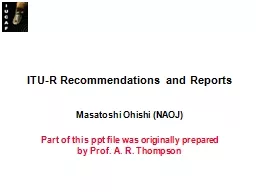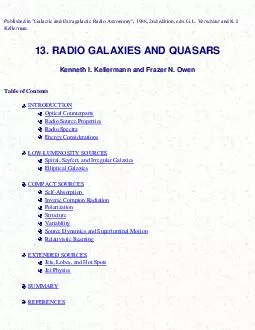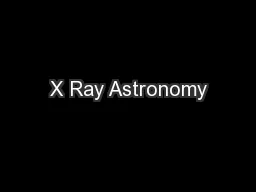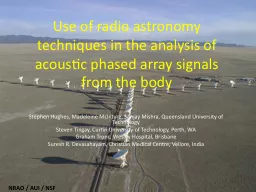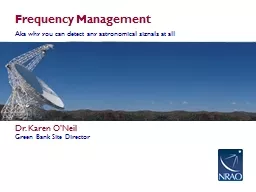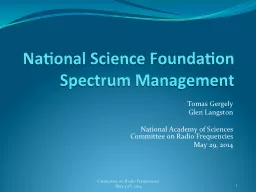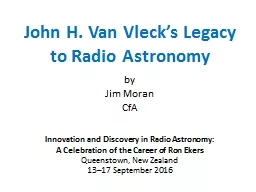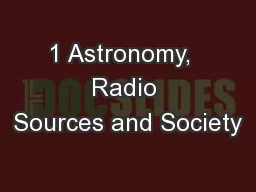PDF-Then, there was Radio Astronomy
Author : medshair | Published Date : 2020-11-18
Karl Jansky Radio Telescope 1933 Karl G Jansky Very Large Array 1980 4 11082017 NSBWotU ALMA 2013 Credits AUINRAO Atmospheric Transparency 5 11082017 NSBWotU Credit
Presentation Embed Code
Download Presentation
Download Presentation The PPT/PDF document "Then, there was Radio Astronomy" is the property of its rightful owner. Permission is granted to download and print the materials on this website for personal, non-commercial use only, and to display it on your personal computer provided you do not modify the materials and that you retain all copyright notices contained in the materials. By downloading content from our website, you accept the terms of this agreement.
Then, there was Radio Astronomy: Transcript
Download Rules Of Document
"Then, there was Radio Astronomy"The content belongs to its owner. You may download and print it for personal use, without modification, and keep all copyright notices. By downloading, you agree to these terms.
Related Documents



